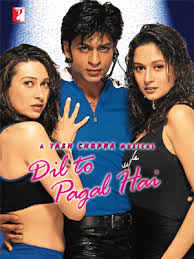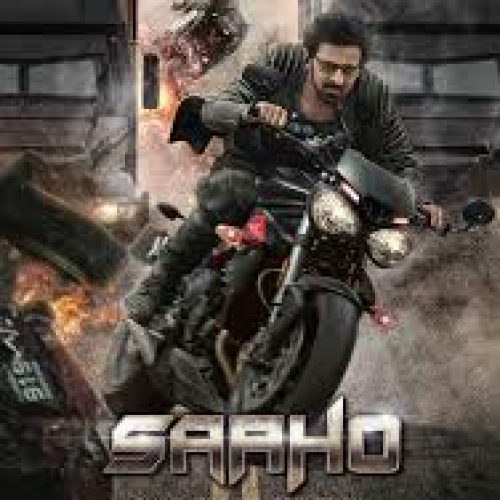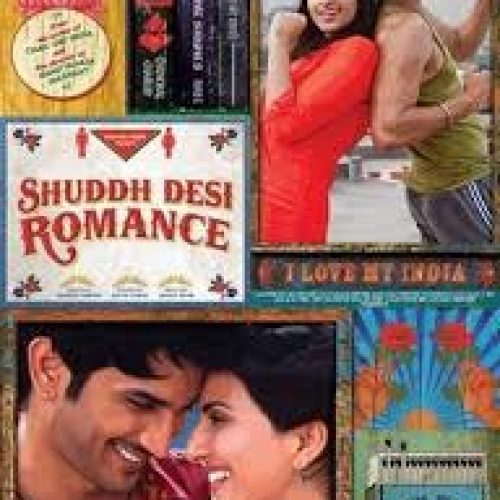Few films can capture the magic of romance like this one does. With Shah Rukh Khan, Madhuri Dixit, and Karisma Kapoor in leading roles, Dil Toh Pagal Hai takes us into the world of love, dreams, and dance. Set in contemporary India, the film revolves around a theater company, where the boundary between life and art blurs beautifully. Directed by Yash Chopra and released in 1997, it’s a romantic musical drama that speaks to those who believe in the timelessness of love. The story is filled with heart, humor, and moments of dazzling emotion, making it a standout in the romance genre.
At its core, the story is about three people whose lives are intertwined through their shared passion for dance and the performing arts. Rahul, played by Shah Rukh, is a choreographer who doesn’t believe in the concept of true love, while Nisha (Karisma), his close friend and dance partner, harbors unspoken feelings for him. However, when Pooja (Madhuri) enters their lives as the new lead dancer for Rahul’s upcoming musical, everything changes. Pooja is the embodiment of faith in love and destiny, creating a subtle tension between her and Rahul. As rehearsals unfold, so do the characters’ emotional journeys, but whether their belief in love can overcome the complexities of their personal lives is a question left unanswered until the very end.
One of the film’s greatest strengths is the stellar acting by its lead trio. Shah Rukh as Rahul brings his signature charm to the role, portraying a man torn between his cynicism and the allure of love with impeccable ease. His nuanced performance, especially in moments of emotional conflict, elevates the film. Madhuri, as always, delivers a graceful yet powerful performance. Pooja’s optimism and faith in destiny come to life in her expressive eyes and delicate mannerisms, making her character instantly likable. Karisma gives one of her best performances as Nisha, the character whose heartache is visible in every scene. She seamlessly captures the pain of unrequited love, while also bringing energy and dynamism to the dance numbers. Together, the three actors share incredible chemistry, and their interactions give the film its emotional depth.
Yash Chopra’s direction deserves special mention. His knack for crafting visually stunning and emotionally resonant romantic tales is in full display here. The film is drenched in vibrant colors and showcases some breathtaking dance sequences. Under Shiamak Davar’s choreography, the dance numbers become more than just performances—they’re expressions of the characters’ inner emotions. The way Chopra balances the grandiosity of the stage with the intimacy of the characters’ relationships is masterful. The pacing is steady, with the film smoothly transitioning between moments of lightheartedness and intense emotion, although some portions in the second half could have been trimmed to maintain a tighter narrative.
The music by Uttam Singh is another major highlight, with timeless melodies that remain etched in memory even today. Songs like “Bholi Si Surat” and “Arre Re Arre” perfectly encapsulate the feeling of falling in love, while “Dholna” and the title track evoke a sense of celebration and youthful exuberance. The soundtrack blends traditional Indian rhythms with contemporary beats, making it accessible to both young and old audiences. Each song not only adds entertainment value but also drives the plot forward, helping the characters express emotions they can’t quite say out loud. Anand Bakshi’s lyrics are simple yet poignant, capturing the essence of love’s complexities.
Visually, the film is a treat. The cinematography by Manmohan Singh plays a crucial role in capturing the grandeur of the stage performances, contrasted with the quiet, personal moments of introspection. The camera movements during the dance sequences are fluid and energetic, while close-up shots during the emotional scenes ensure that the audience is intimately connected with the characters. The lighting, particularly in the romantic scenes, adds a dreamlike quality to the film, enhancing its fairytale-like atmosphere. This visual richness complements the film’s underlying theme of love as something both grand and intimate.
The costume design by Manish Malhotra also stands out. Each character’s wardrobe reflects their personality, with Rahul’s laid-back yet stylish outfits aligning with his creative nature, and Pooja’s flowing, feminine dresses symbolizing her belief in love and destiny. Nisha’s costumes, often more modern and edgy, mirror her bold personality and the fierce energy she brings to the stage. The attention to detail in the costumes helps ground the film’s larger-than-life romantic themes in a contemporary setting.
While special effects aren’t a significant part of the movie, the overall production design is noteworthy. The sets for the stage performances are elaborate and visually striking, filled with dynamic lighting and carefully crafted backdrops that reflect the emotions of the characters. The seamless integration of these elements helps make the film feel polished and cohesive, even in its more theatrical moments.
In conclusion, this film stands as a classic of Indian romantic cinema. The performances, direction, music, and visuals all come together to create an unforgettable experience that explores the complexity of love. While some may argue that the plot follows a predictable arc, it is the execution and emotional depth that set it apart. The chemistry between the lead actors, combined with Yash Chopra’s visionary direction and Shiamak Davar’s innovative choreography, ensures that the film remains engaging from start to finish. For fans of romance, musicals, and visually beautiful cinema, this movie is a must-watch. It reminds us that love, in all its unpredictability, is a journey worth taking, even when it makes no logical sense—because after all, the heart wants what it wants.







